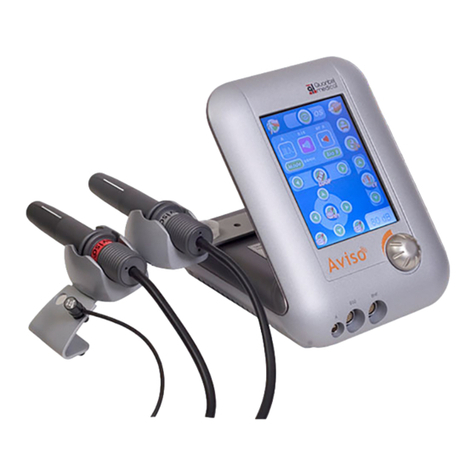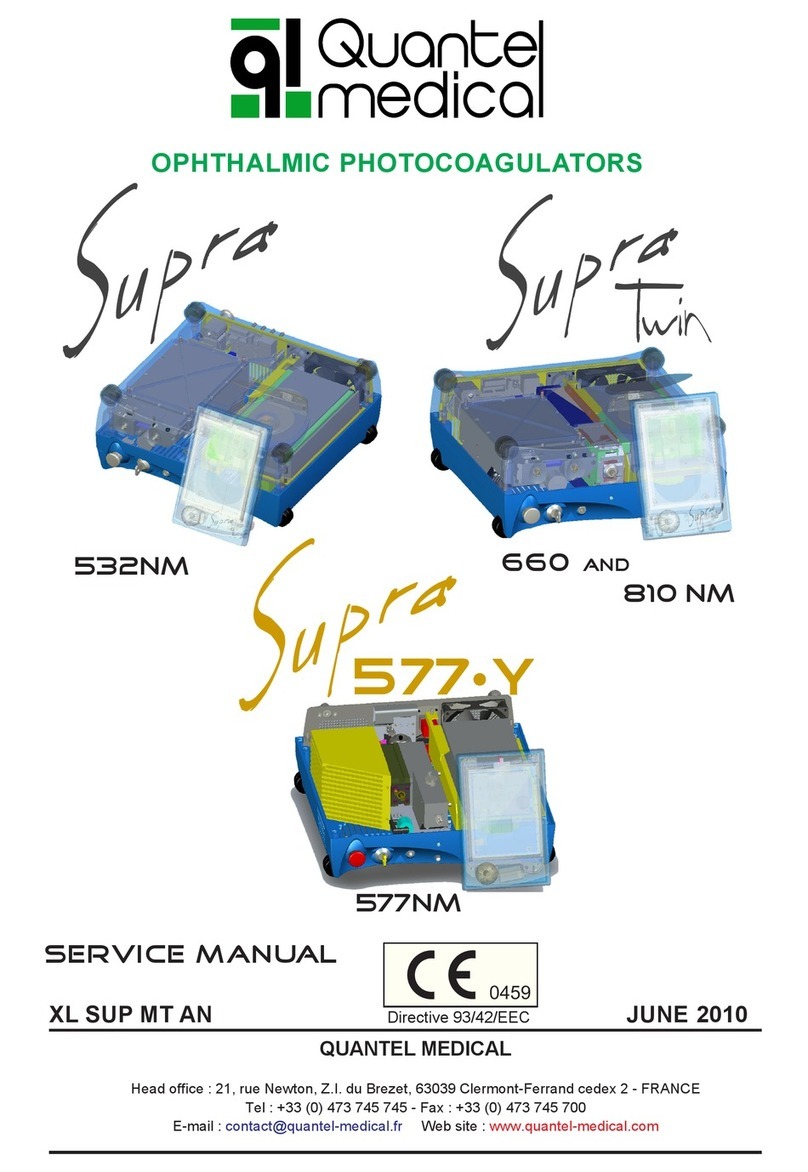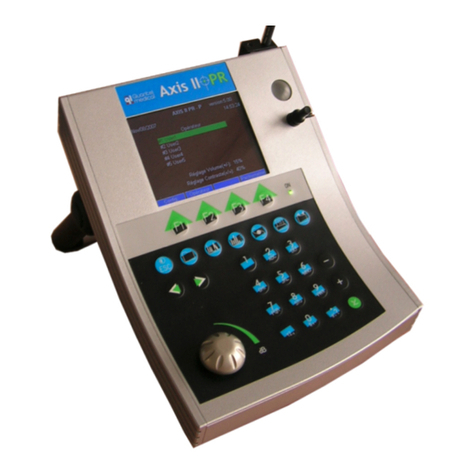
User manual
IV - Maintenance
XL_FUSION_ME_AN_160314
1PR V NTIV MAINT NANC
Contact your QUANT L M DICAL or your local distributor at least every six months to carry out a preventive
maintenance visit to confirm the correct function of your system.
At each six-monthly visit QUANT L M DICAL or your local distributor will clean the optics, check the safety
filter coatings, and check general performance, alignment and calibration of the system.
At least once a year QUANT L M DICAL or your local distributor will fully re-calibrate the system and check
ground resistance and earth leakage current (in accordance with I C 60601-1).
2CAR AND MAINT NANC OF TH OPTIMIS FUSION LAS R SYST M
2.1 CL ANING AND DISINF CTION FOR PATI NT AR AS
The use of the OPTIMIS FUSION involves only brief skin contact with the patient, but attention should be
given to the possibility of cross-contamination between patients via the patient contact areas of the system.
These are the chin rest, headrest and steadying handles.
2.1.1 R SPONSIBILITI S FOR CL ANING AND DISINF CTION
The health care facility where the instrument is to be used is responsible for:
1) Determining the level of cleaning and disinfection of patient contact areas required between patients.
2) Appropriate education and training for staff required to carry out cleaning and disinfection.
3) nsuring that routine cleaning and disinfection methods used in the facility are compatible with the
instrument.
4) Routine cleaning of the entire system.
2.1.2 CL ANING AND DISIF CTION OF PATI NT AR AS
Although cleaning and disinfection procedures and standards within different health care facilities may vary
considerably, the following points are provided as general guidelines:
1) Thorough cleaning of all patient contact areas is recommended for each procedure.
2) Disposable chinrest papers can also be attached to the chinrest area and changed between patients.
3) Manual cleaning can be carried out by wiping all contact areas using a suitable liquid cleaning agent
which is non-corrosive, non-toxic and Iow in residue.
2.1.3 CL ANING TH GONIOSCOPY CONTACT L NS S
The contact lenses for use with the
reflectivity coating bonded to
the lens, and they must therefore be handled carefully.
As soon as a lens is removed from the patient’s eye, thoroughly rinse it in cold or warm water to remove
salts, mucous and gonioprism solution. Wash in warm water with a few drops of clear dishwashing liquid,
then rinse with cool water and blot dry. Dry completely before storing in the case.
To effectively disinfect the lens, soak in a solution of sodium hypochlorite 1,2° chl. for a recommended
exposure time of 30 minutes. Rinse thoroughly with cool water and blot dry. Dry completely before storing
in the case.
To sterilize, use ethylene oxide gas with aeration not to exceed 125°F (52°C), following the sterilizer
manufacturer’s recommendation. Remove the lens from the case before sterilizing.
CAUTION:
Do not boil or autoclave a lens. Do not use alcohol, hydrogen peroxide or acetone on a lens, as this will
damage it and render it unusable.



























